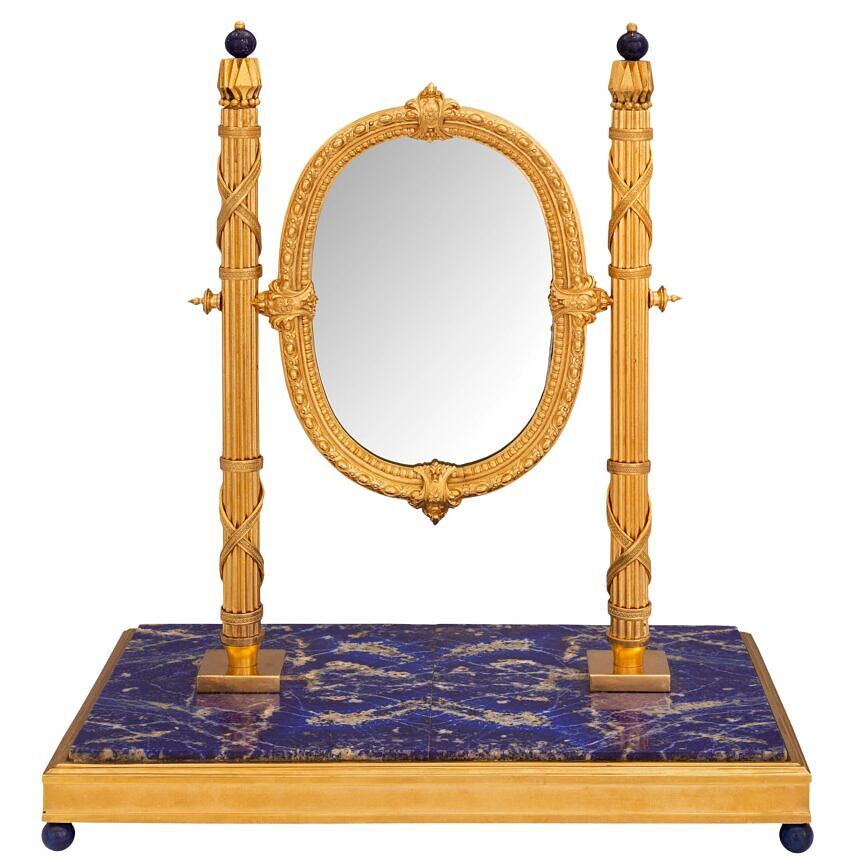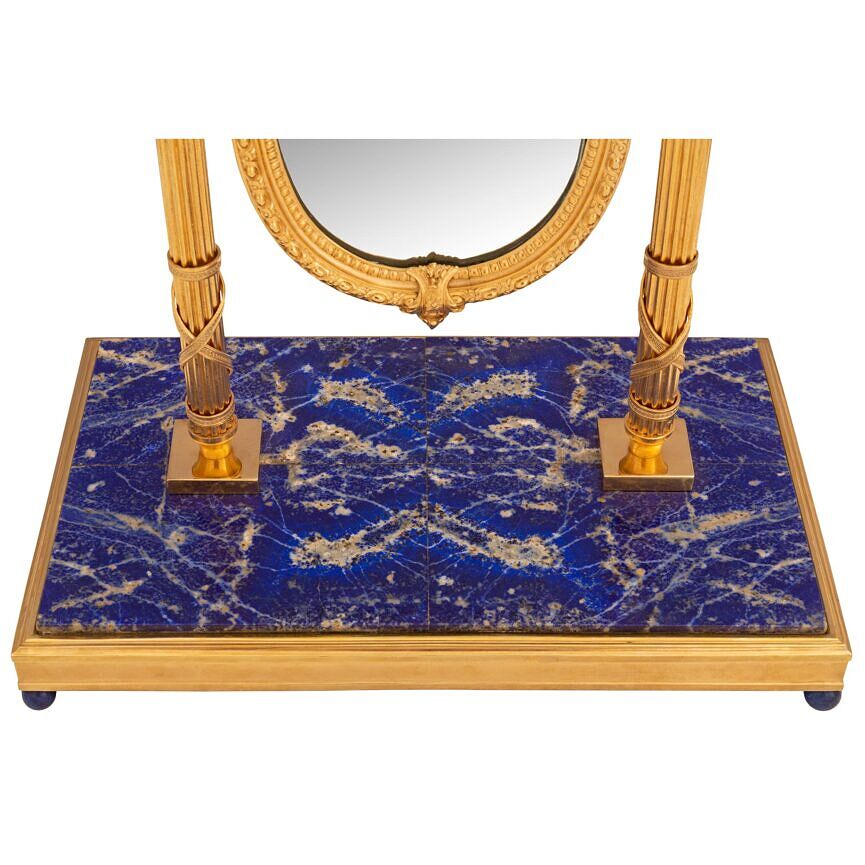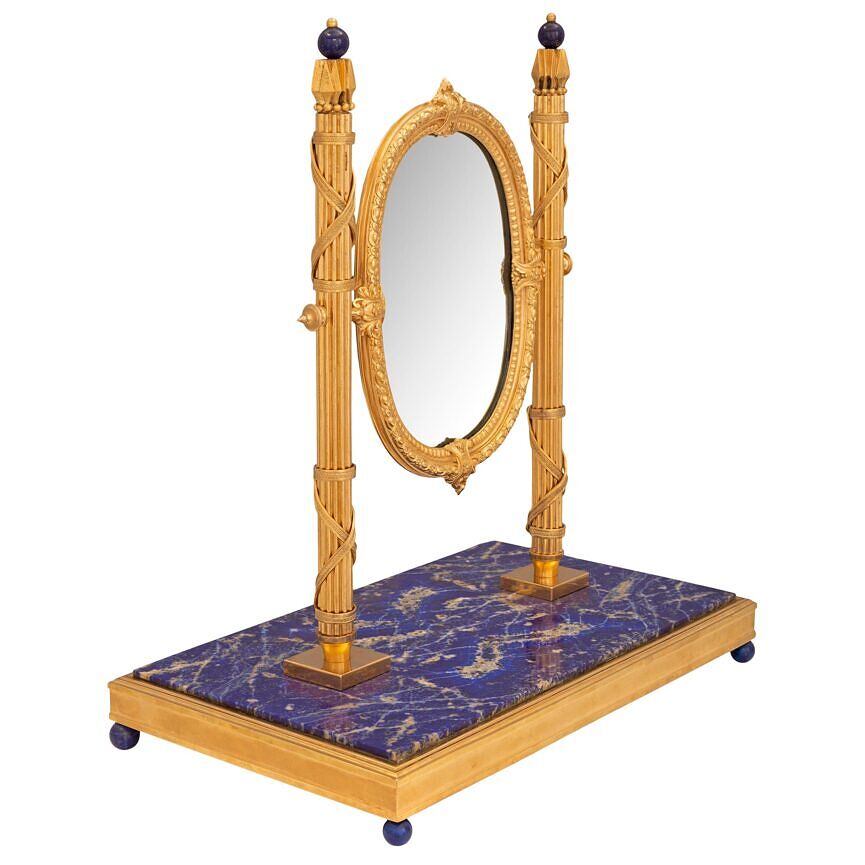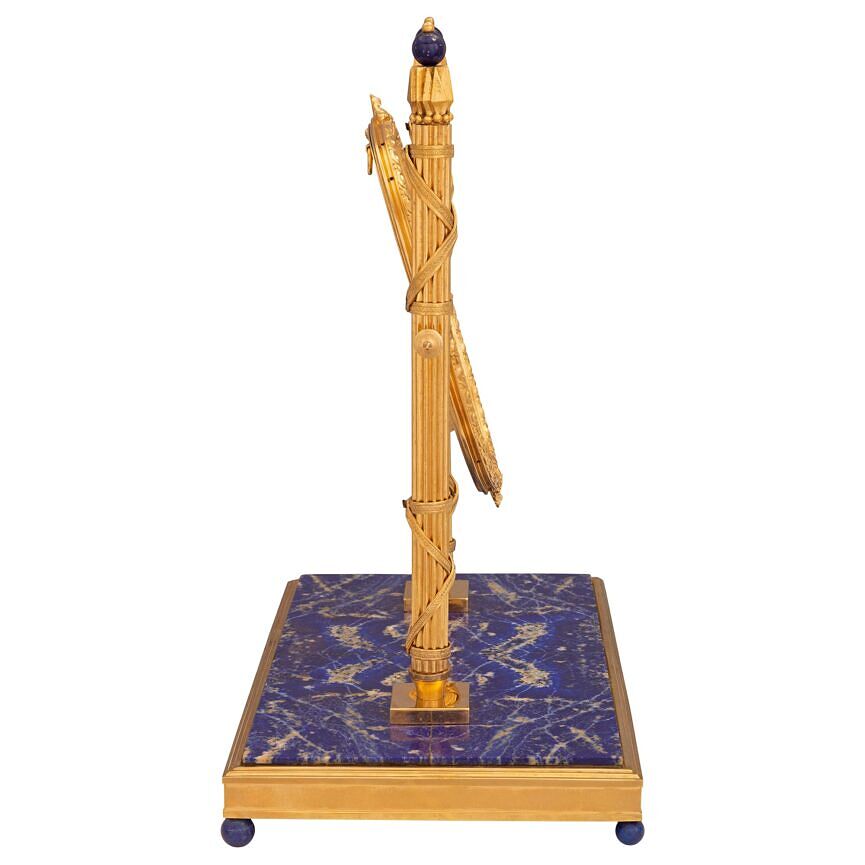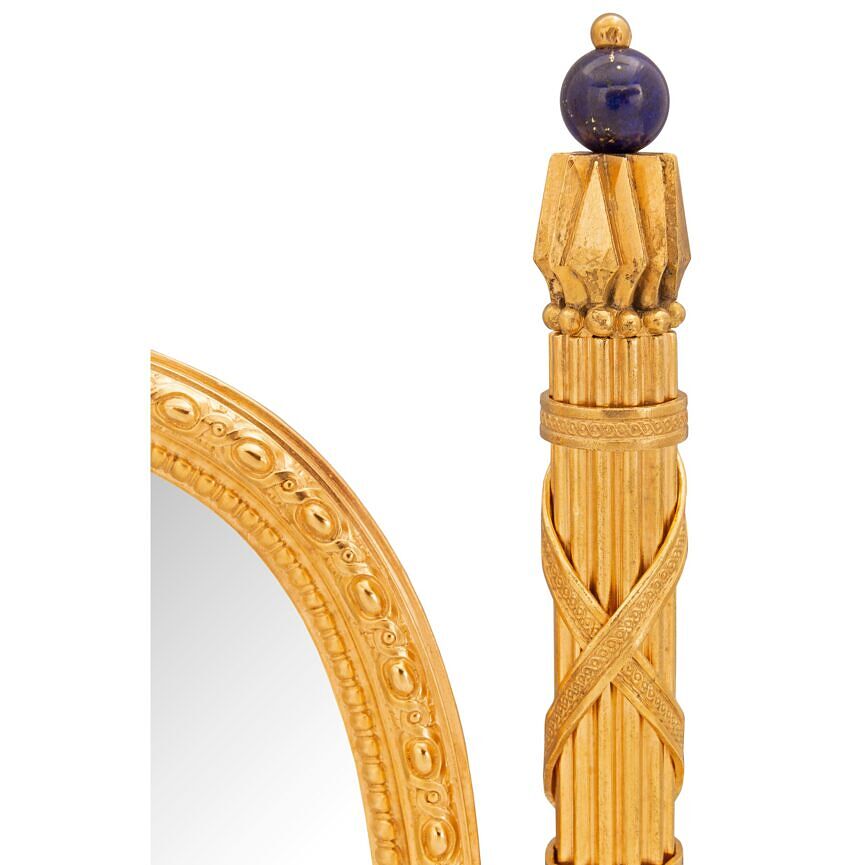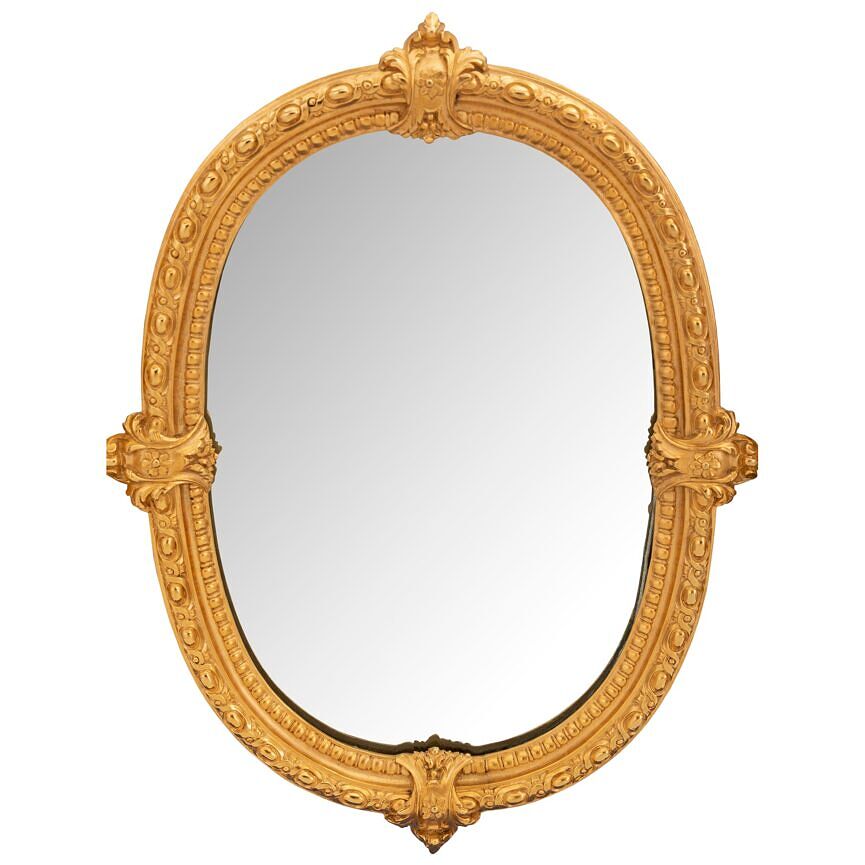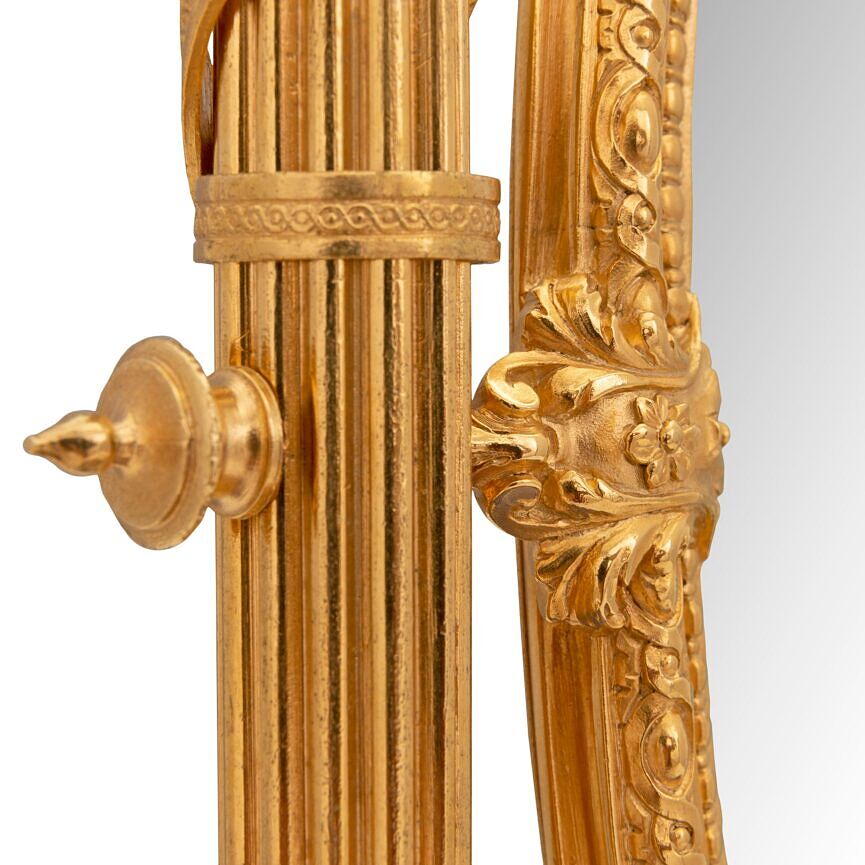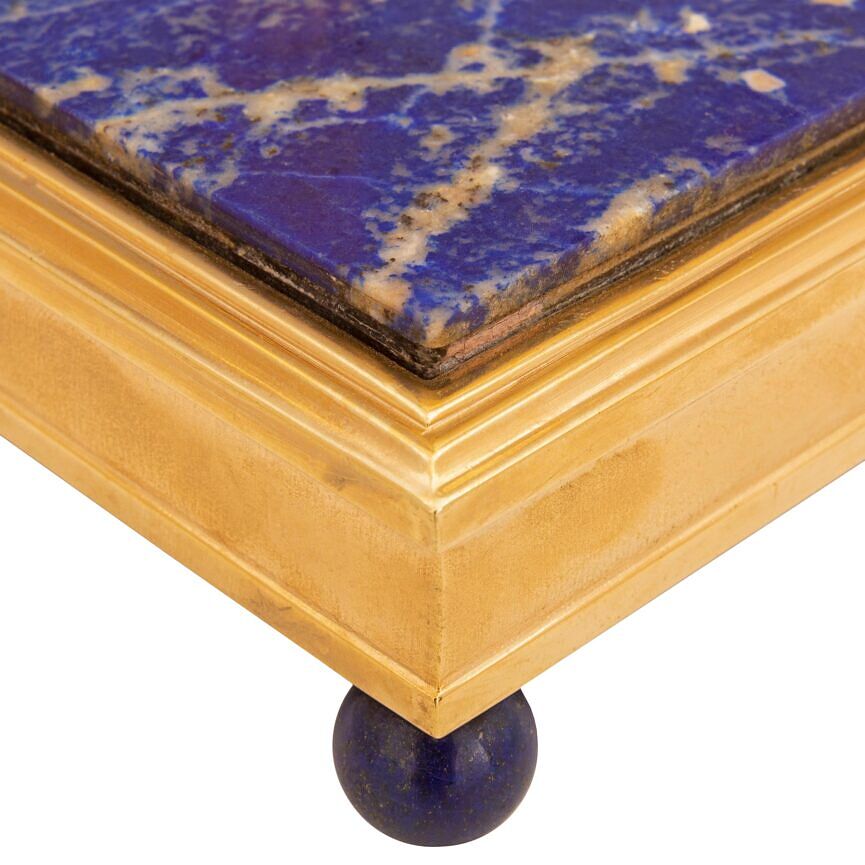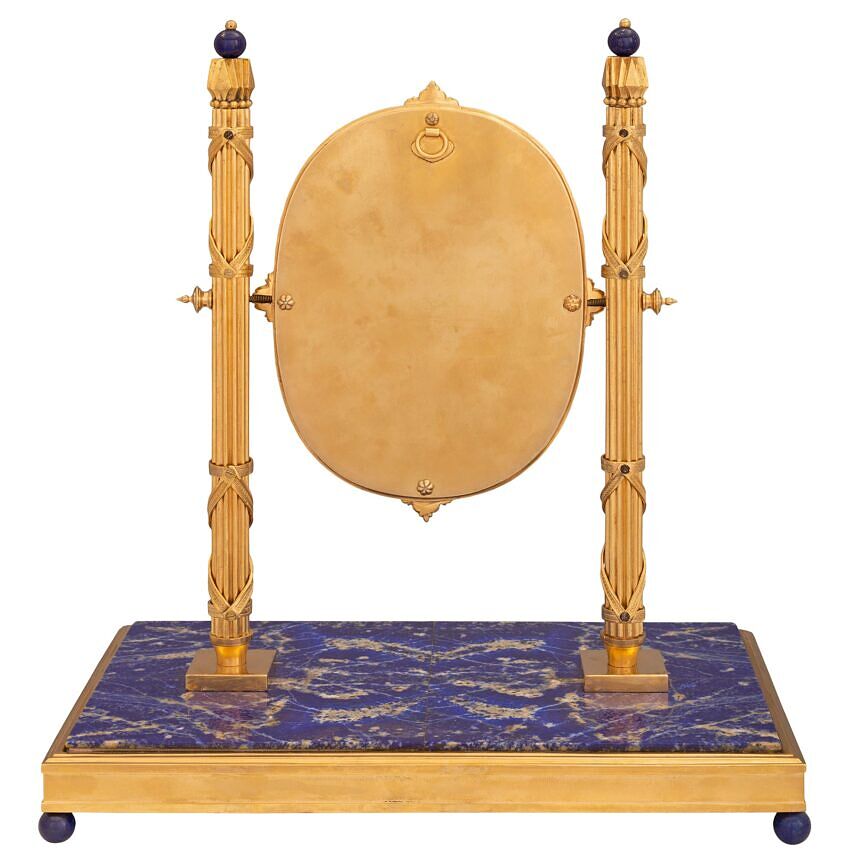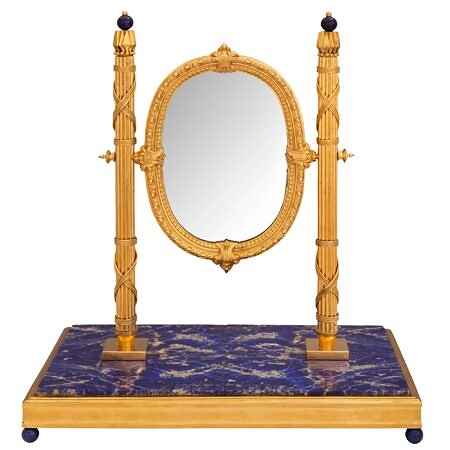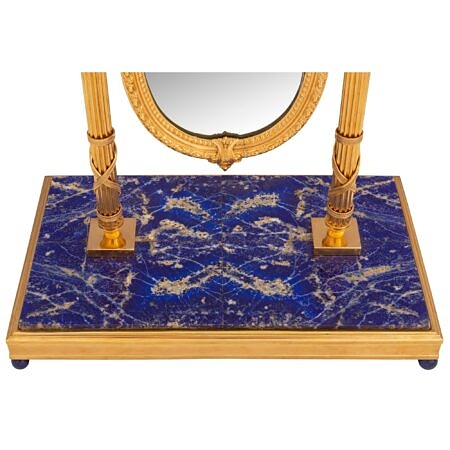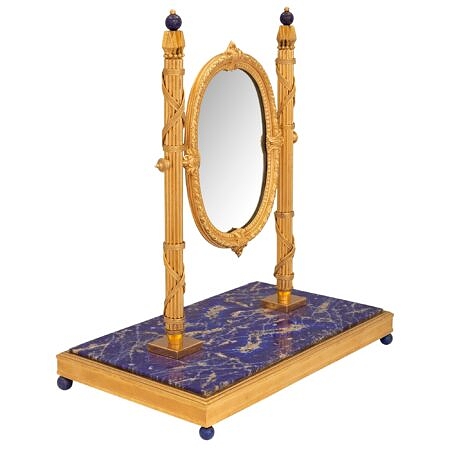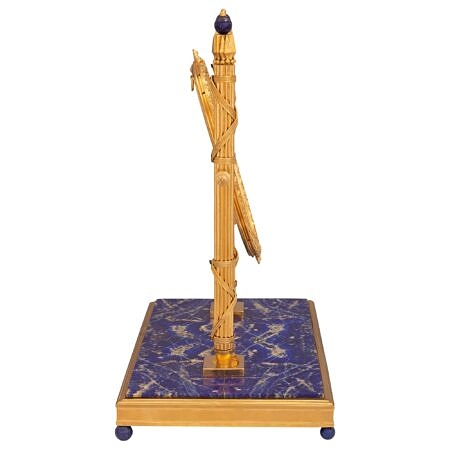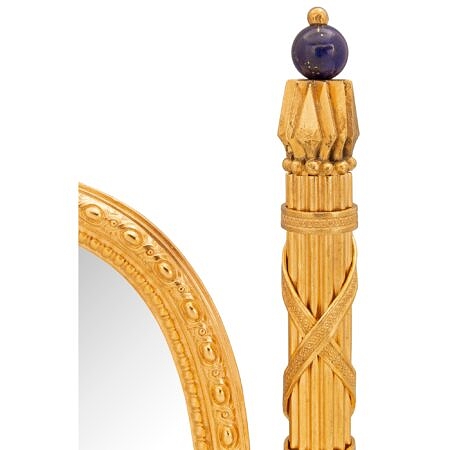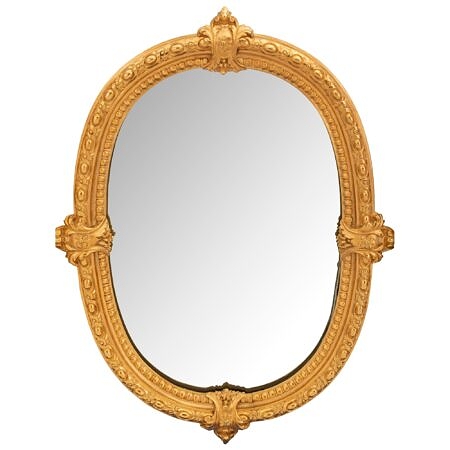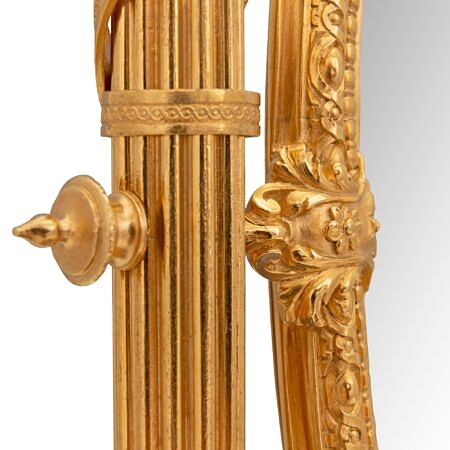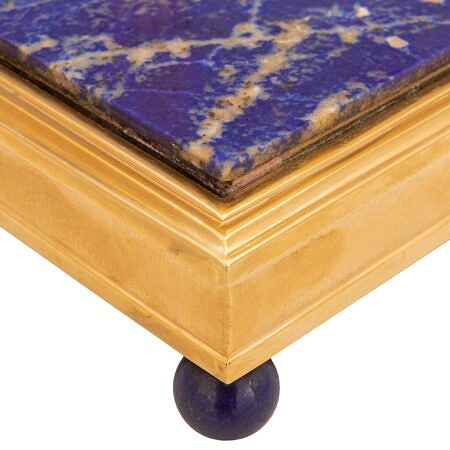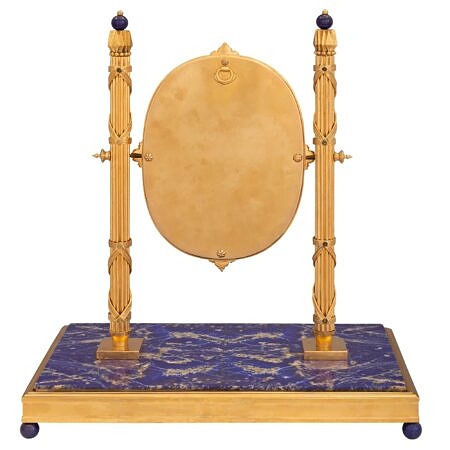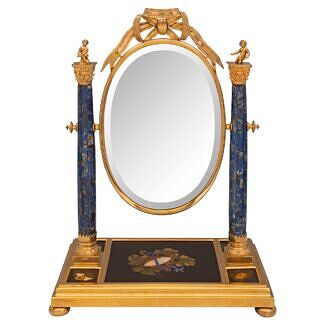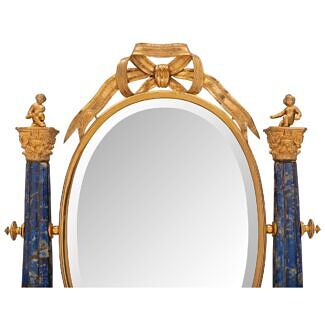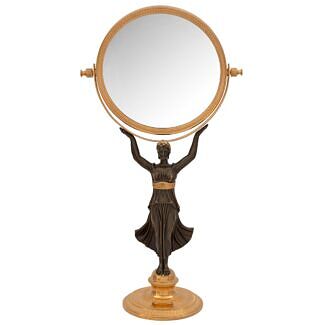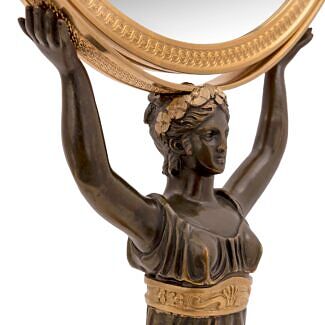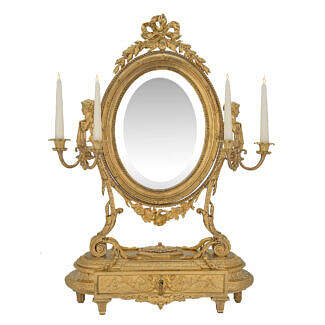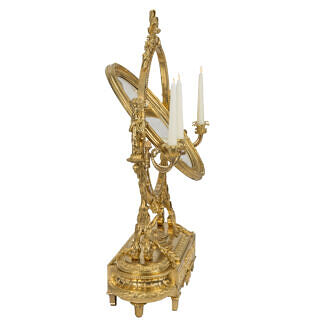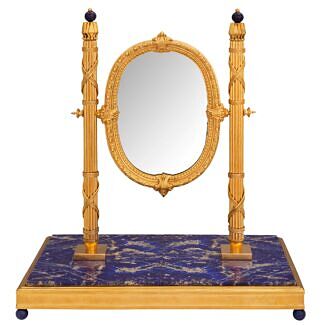A French 19th century Louis XVI st. Belle Époque period ormolu and Lapis Lazuli marble vanity mirror
List: $14,800.00
A stunning and very unique French 19th century Louis XVI st. Belle Époque period ormolu and Lapis Lazuli marble vanity mirror. The mirror is raised by elegant and extremely decorative Lapis Lazuli ball feet below the stunning rectangular Lapis Lazuli... — Read More
A stunning and very unique French 19th century Louis XVI st. Belle Époque period ormolu and Lapis Lazuli marble vanity mirror. The mirror is raised by elegant and extremely decorative Lapis Lazuli ball feet below the stunning rectangular Lapis Lazuli base with a fine wrap around ormolu band with a mottled border. Two impressive fluted columns lead upwards and are tied with beautiful intertwining garlands and topie shaped finials at each side, which tighten the mirror in place. Each finial is finished with a superb Lapis Lazuli ball above. The mirror at the center retains its original mirror plate framed within a stunning ormolu band with beaded and interlocking Les Oves and richly chased foliate designs. — Read Less
- Item # 12066
-
H: 14.75 in L: 12.75 in D: 7.75 in
H: 37 cm L: 32 cm D: 20 cm
- France
- 19th Century
- Marble/Stone, Ormolu
- Belle Époque Read More, Louis XVI st. Read More
Related products
-
# 9982 - H: 16" L: 12" D: 8"
-
# 11599 - H: 19" L: 10" D: 5"
-
# 8639 - H: 28" L: 20" D: 9"


